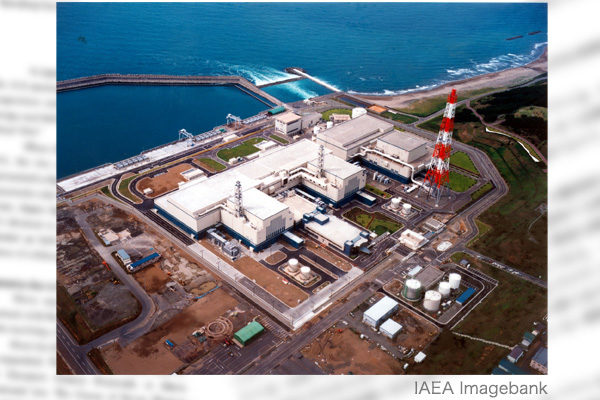Since a serious nuclear power plant accident in Fukushima Prefecture in March 2011, Japan has promoted a policy of giving priority to renewable energy centered on solar photovoltaics power generation. But fossil-fired thermal power plants are used for covering falls in output from solar and wind power plants that are called variable power sources because of output changes depending on weather conditions. As long as fossil-fired plants are required, CO2 emissions cannot be effectively reduced. If supply and demand adjustment through thermal plants is unsuccessful, a major power outage may be triggered. The government issued a power-supply warning for the Tokyo Electric Power Company (TEPCO) service area and its vicinity for March 22-23, leading us to remember that we face the risk of a huge power outage.
An earthquake damages thermal power plants
Peak power supply in the TEPCO service area stands at 45 million kilowatts, including 17.77 million kW (39% of the total peak supply) from solar PV facilities, as well as output from liquefied natural gas, coal and hydro power plants. On March 26 when I wrote this article, solar PV facilities provided 14 million kW under sunny weather. The supply is equivalent to output from 14 of 1 million kW nuclear reactors.
Before the Fukushima accident, TEPCO had owned a total of 17 nuclear reactors. A huge outage was avoided with some rolling blackouts implemented in the Tokyo metropolitan area at the time of the accident, because power was supplied from the Kashiwazaki-Kariwa nuclear power station in Niigata Prefecture. Output from the solar PV capacity of 17.77 million kW declines to less than 1.7 million kW under cloudy weather and to zero during the night and early morning. Standby power systems to cover drops in output from the solar PV capacity include pump-up power plants that pump up water to dams during power oversupply and use the water for generating power under a tighter supply-demand balance. As water in such dams is consumed in one day, however, thermal power plants are required to avoid blackouts.
Some of the thermal power plants were damaged by another earthquake of magnitude 7.4 on March 16 with an epicenter in waters off Fukushima Prefecture. Unit 1 (with capacity at 1 million kW) of Soma Kyodo Power’s Shinchi thermal power station in the prefecture became inoperable due to damages to a boiler and coal-loading equipment. Tohoku Electric Power’s Haramachi thermal power station (with two 1 million kw units) stopped operation. Unit 6 (with capacity at 0.6 million kW) of JERA Co.’s Hirono thermal station also became inoperable due to oil leaks from the transformer. These power plants provide electricity to the TEPCO service area. As a total of roughly 3.6 million kw in power supply was lost, automatic outages came at various locations in Tokyo.
A power-supply warning issued under cold waves
While these thermal power facilities remained inoperable, cold waves with snow were forecast to hit eastern Japan on March 22. So, the Ministry of Economy, Trade and Industry issued the first ever power-supply warning, calling for power consumption savings. In the morning of March 22, power demand in the TEPCO service area soared rapidly to 105% of the supply capacity, forcing TEPCO to receive power accommodation from other power utilities. At 11 a.m., water levels fell to 79% of the peak at dams for pump-up power plants. Although dams were predicted to become empty by 10 p.m., TEPCO managed to tide over the blackout crisis with power consumption savings.
As the power supply-demand balance chronically tightens, the Kashiwazaki-Kariwa nuclear power station should be restarted as early as possible if only to cover the instability of solar PV power generation. The seven-reactor nuclear power station boasts of the world’s largest capacity at 8.25 million kW. A large underground fortress was constructed for its Units 6 and 7 in which emergency power sources, water injection facilities, a control panel for safety shutdown and filter vents to filter out radioactive materials were installed. It became more invulnerable to aircraft terrorist attacks or natural disasters. Nuclear reactors that have been restarted in western Japan have become more resilient with similar equipment.
Tadashi Narabayashi is a specially appointed professor at the Tokyo Institute of Technology and a director at the Japan Institute for National Fundamentals.


